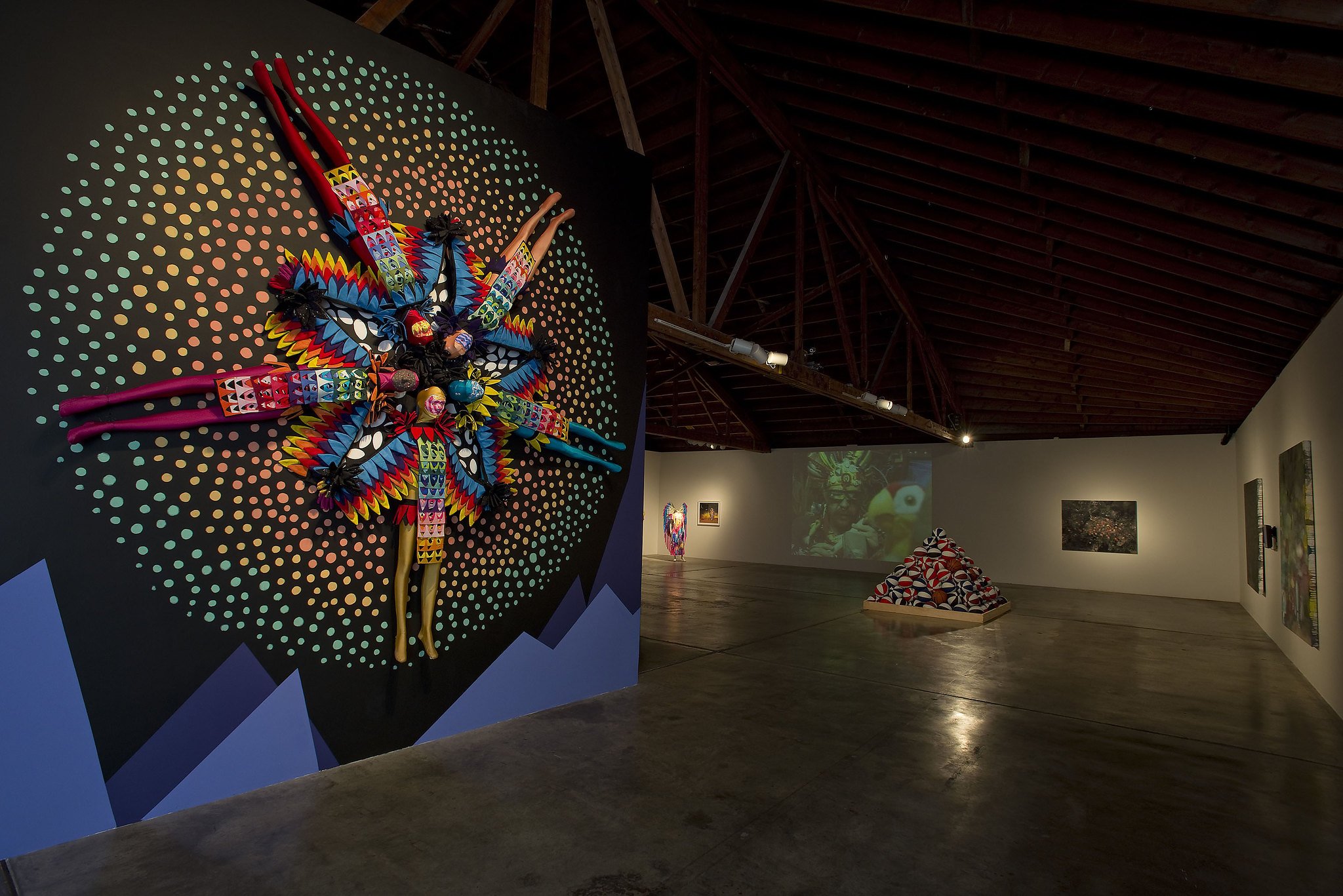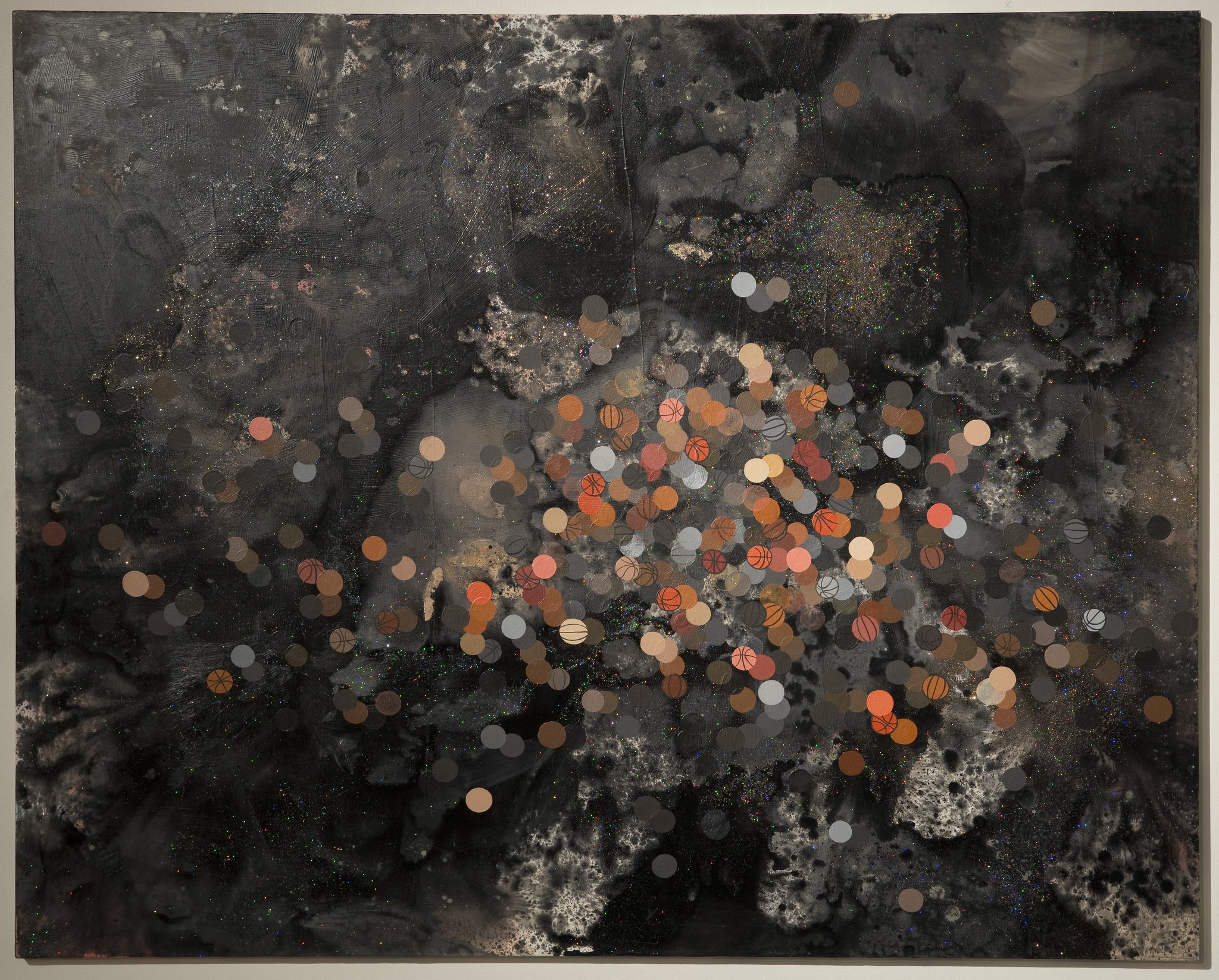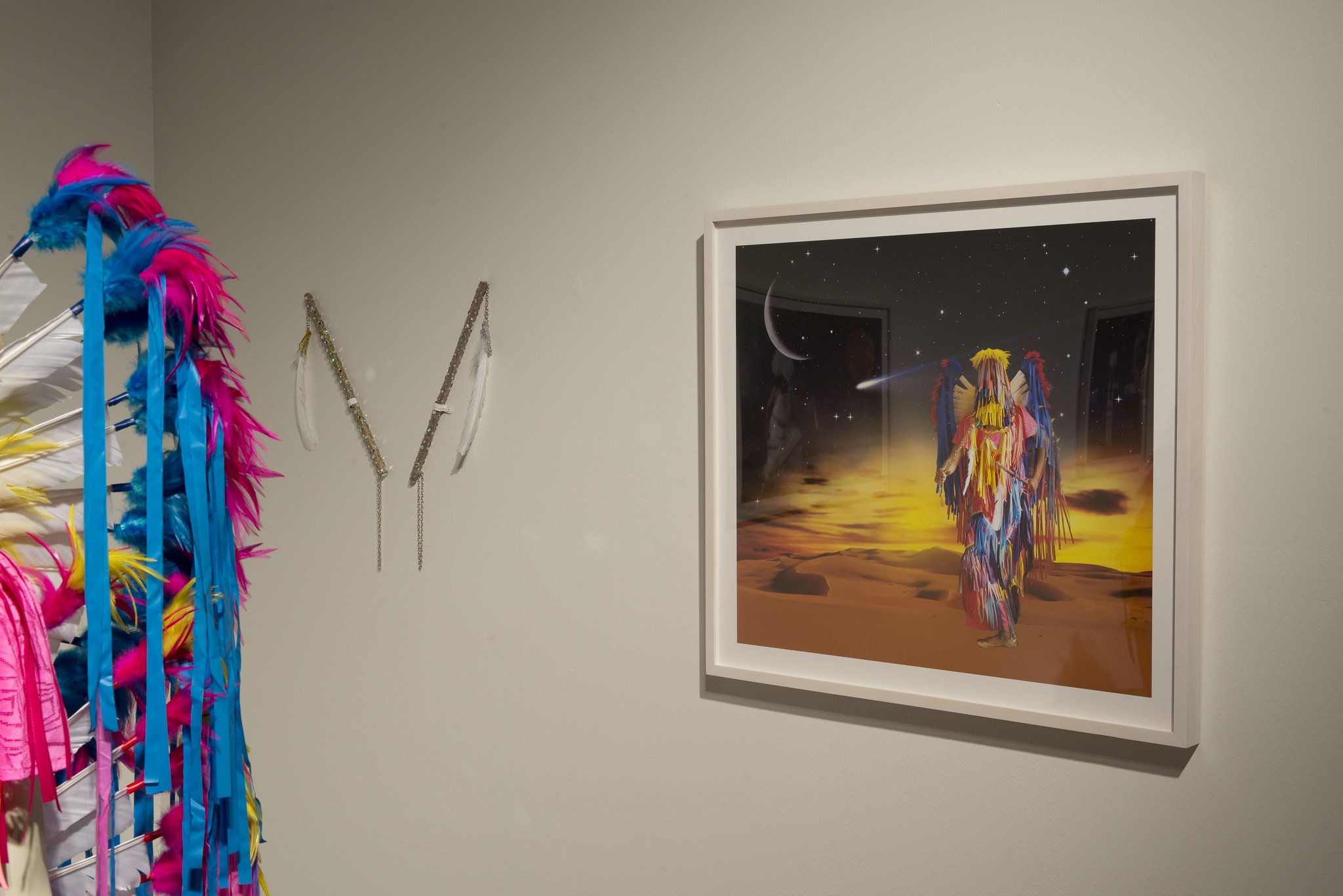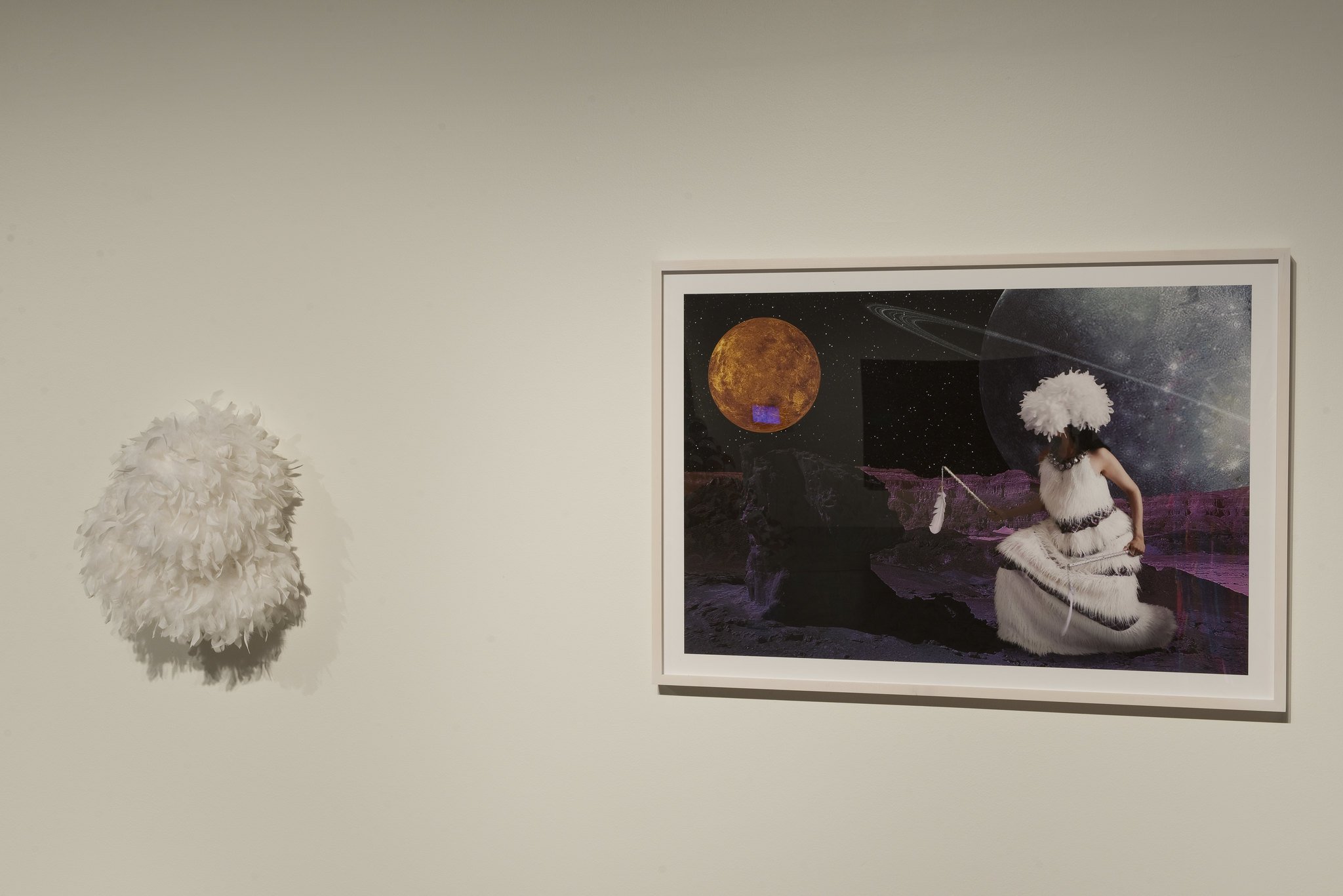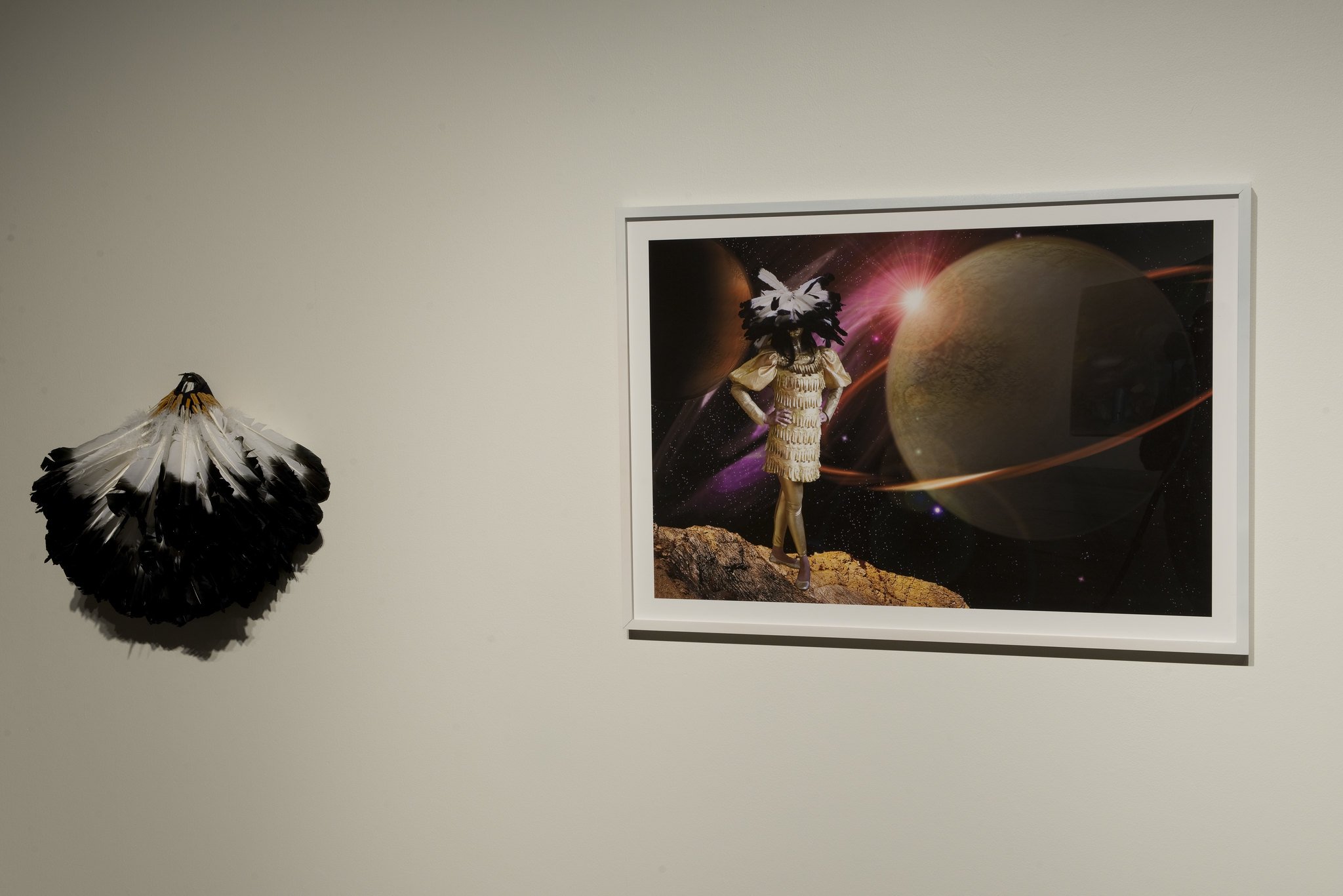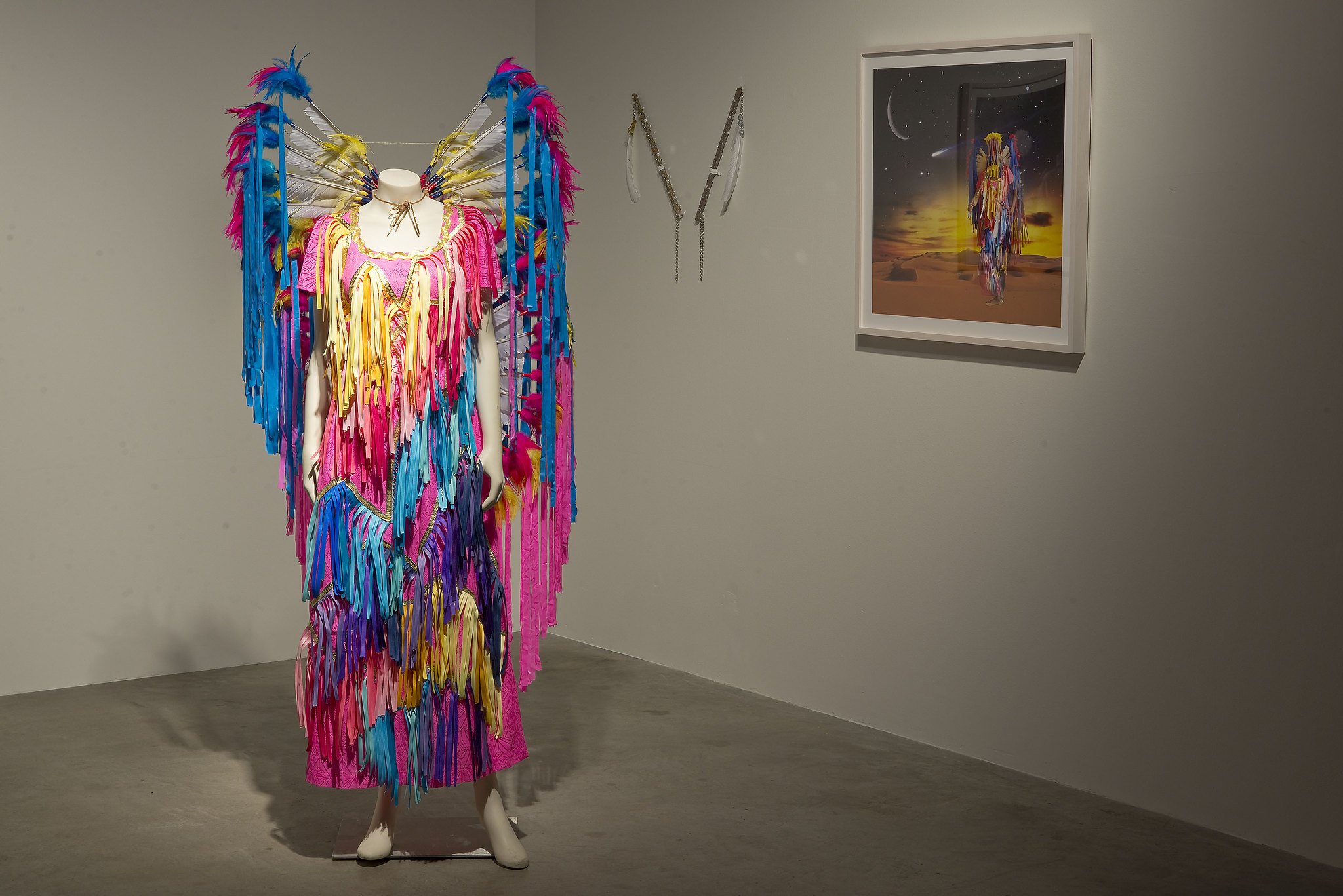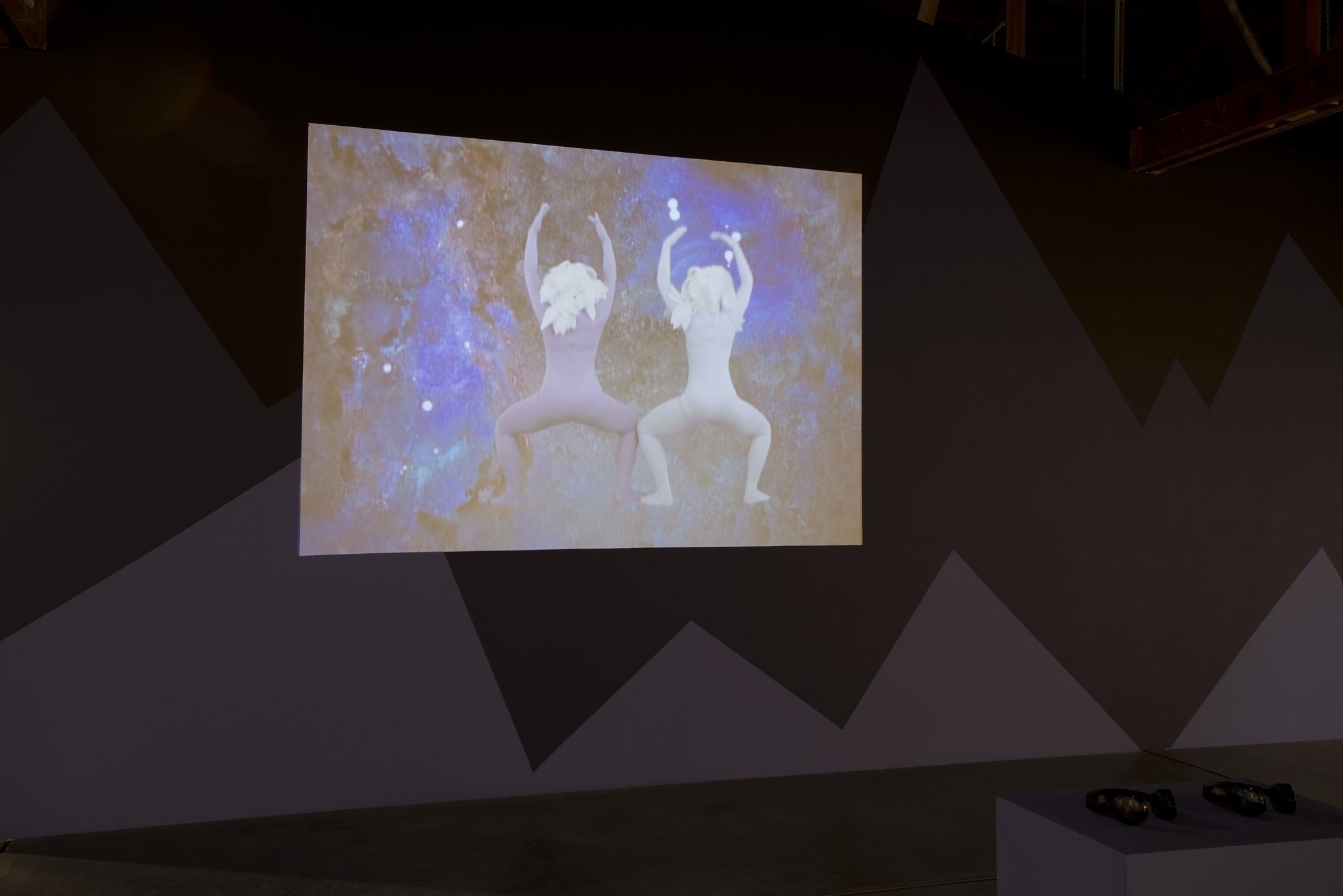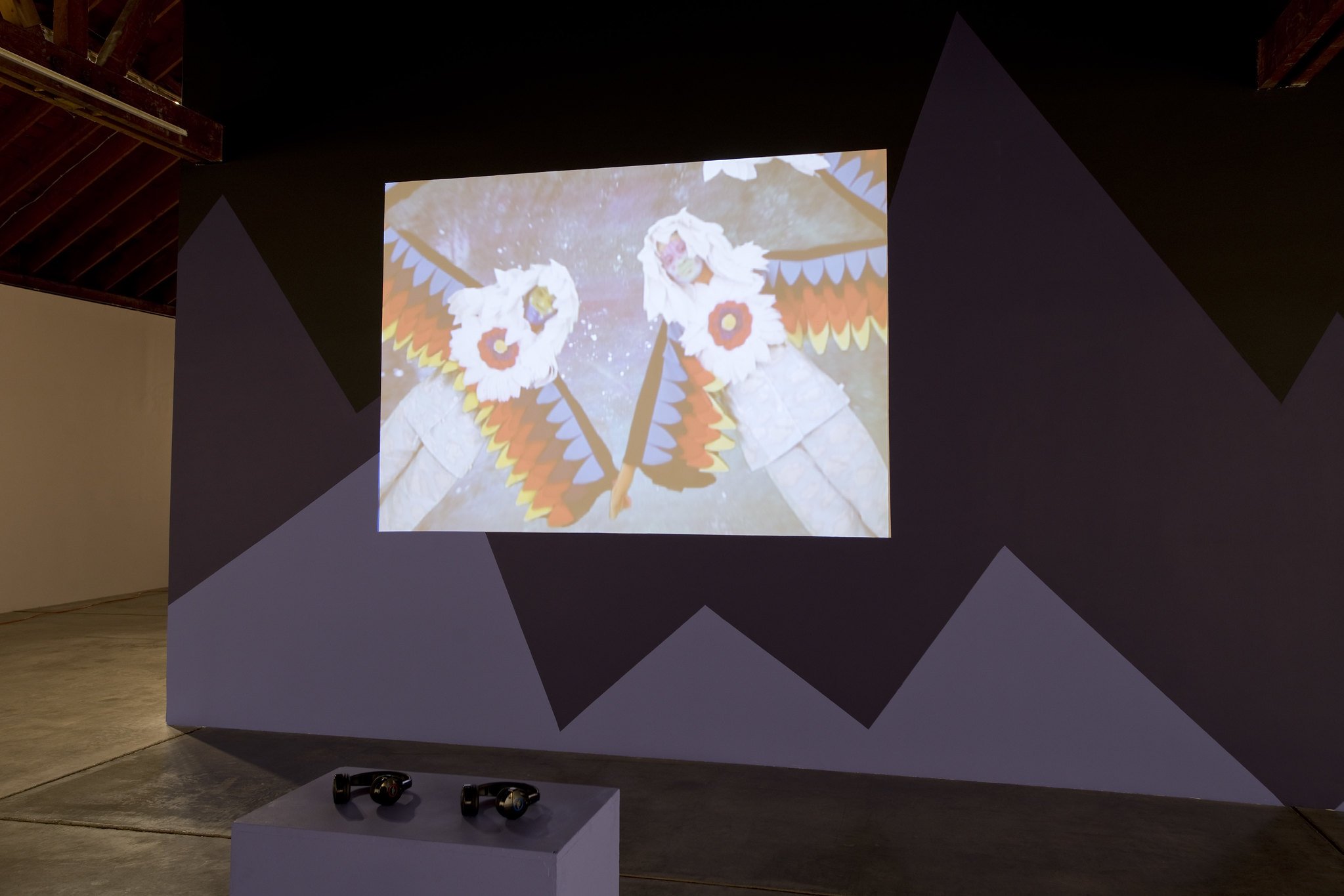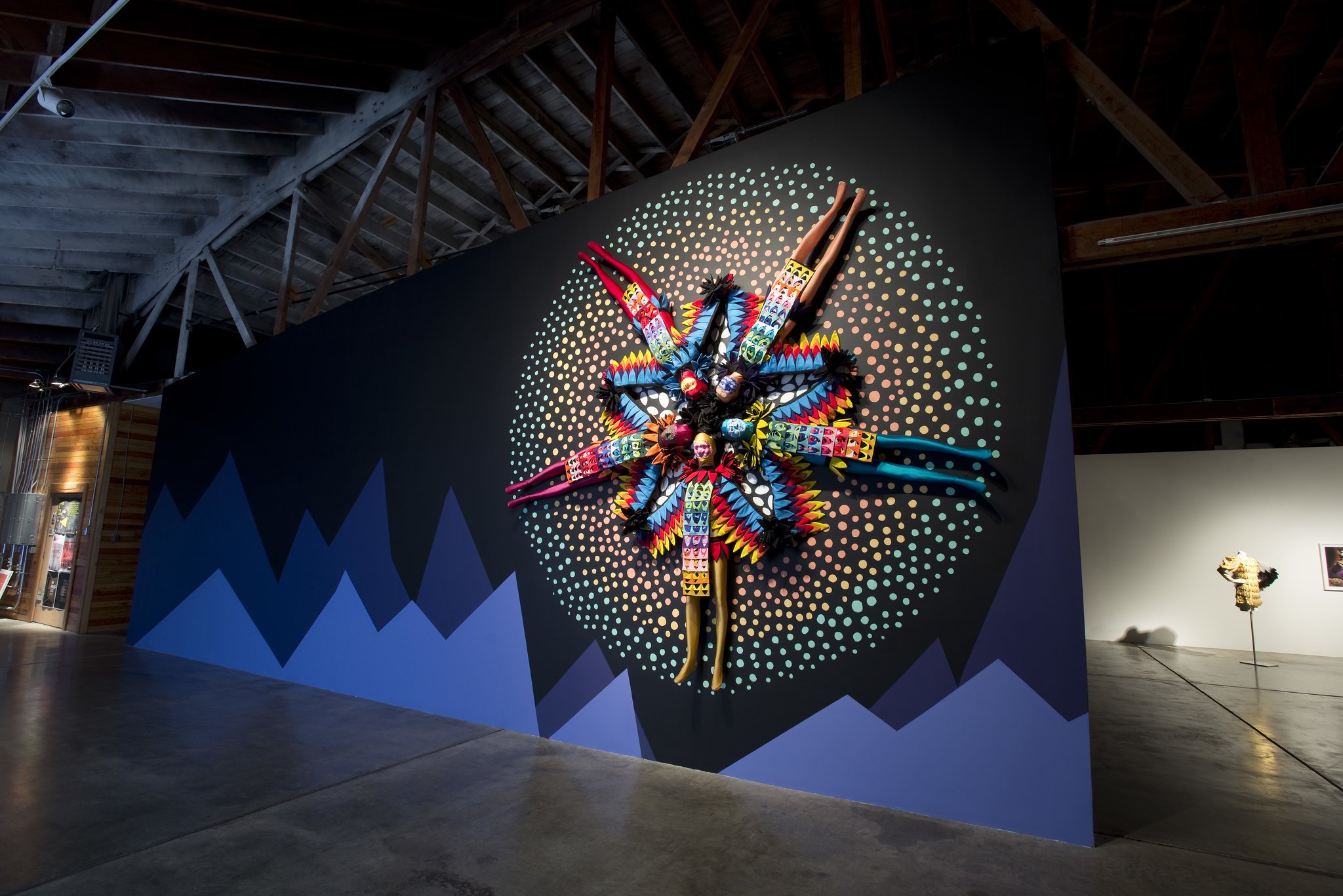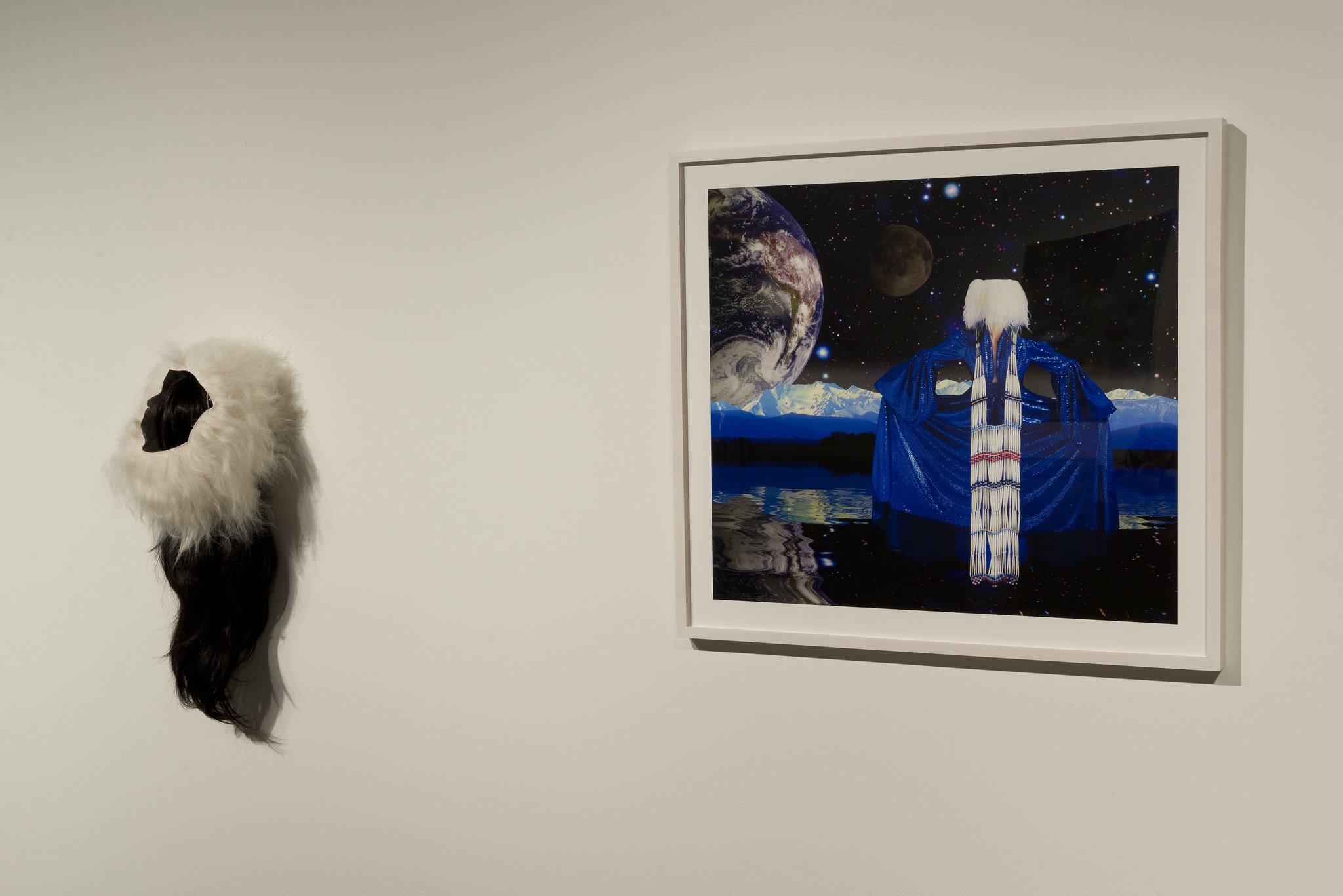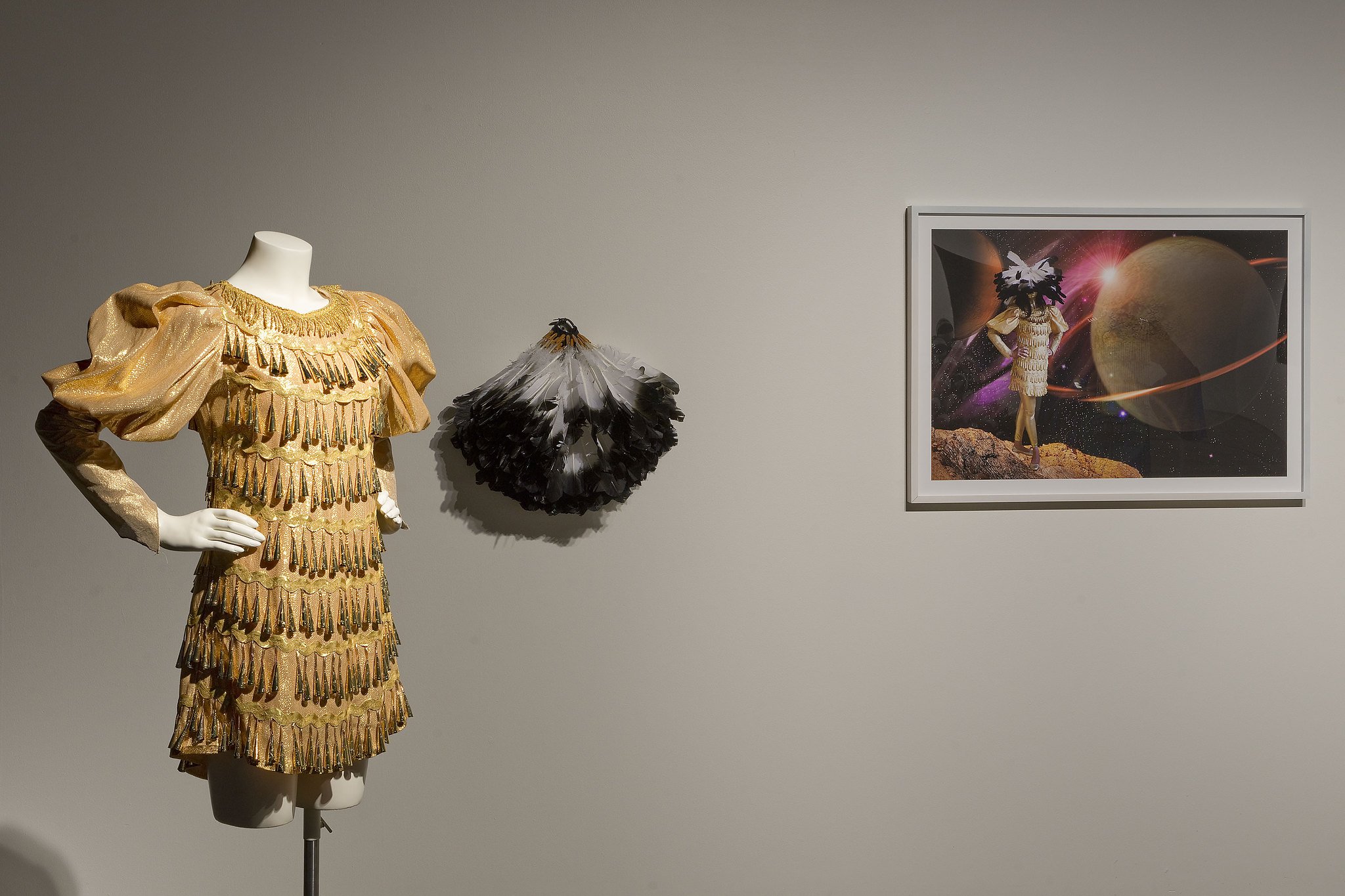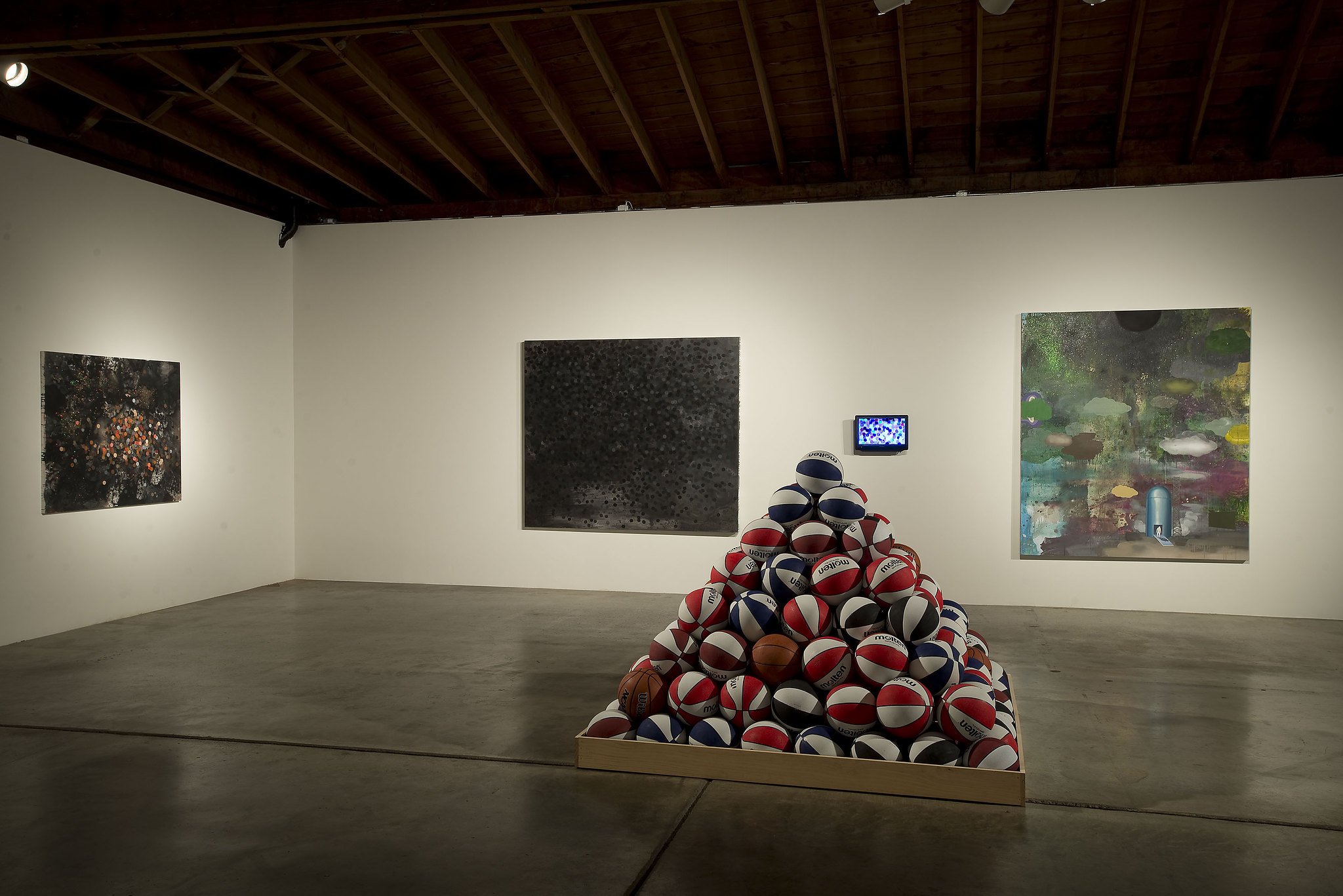Space is the Place
Saya Woolfalk | Wendy Red Star | Guillermo Gómez-Peña | David Huffman
Exhibition Dates: March 23 -April 27, 2013
Space is the Place features a mix of new, recent and historical work that investigates the evolution and mutation of Afrofuturism as the conversation has broken away from the movement’s original context and evolved to incorporate such terms as Indiginous futurism and Chicanafuturism.
In the loosely defined movement of Afrofuturism, artists use the imagery and language of science-fiction to construct visual narratives about identity, politics and technology. Coined by cultural critics aiming to draw a connective thread through the work of artists and writers such as Parliament-Funkadelic, Sun Ra, Samuel R. Delany and Octavia Butler, the movement of Afrofuturism re-examines technology and history through the other. The writer Mark Dery explains:
“African Americans, in a very real sense, are the descendants of alien abductees; they inhabit a sci-fi nightmare in which unseen but no less impassable force fields of intolerance frustrate their movements; official histories undo what has been done; and technology is too often brought to bear on black bodies (branding, forced sterilization, the Tuskegee experiment, and tasers come readily to mind).”
This critical movement has evolved in recent years. As Catharine Ramirez writes in her essay Afrofuturism/Chicanafuturism “Chicanafuturism explores the ways that new and everyday technologies, including their detritus, transform Mexican American life and culture. It questions the promises of science, technology, and humanism for Chicanas, Chicanos, and other people of color.” By using the tools and ideas articulated in Afrofuturism to explore other types of cultural difference, Ramirez and others have created a framework to use the language of science friction to talk about contemporary race and identity.
While not necessarily identifying with Afro/Chicano/Indigenous futurism, all four artists represented in Space is the Place create landscapes and narratives that explore collective inheritances in distinct cultures.
Saya Woolfalk’s project The Empathics narrates an imaginary group of women merging with the environment both culturally and physiologically. As they undergo their metamorphosis, they become hybrid beings, a mix of flora and fauna. Visually lush and ritualistic, there is a transcendent quality to the Empathics’ fusion with the world around them. They herald a future in which composite cultures can better understand or empathize with one another.
David Huffman’s work ventures between abstraction and painterly representation, constructing landscapes that give way to celestial swirls and dense basketball color fields. His paintings are appealing, even pretty, but he never fully gives way to pure aestheticism. He states that the image of the basketball is “a way to reverse conversations that are usually more formal and abstractions that are Eurocentric in perspective. They tend to make clinical analysis of a painting and I’m doing that in a way, but it’s me doing it. I don’t remove myself from the act of the work.” Huffman engages with a variety cultural references - from Egyptian pyramids, to the NASA space program, to the behavior of dark matter when galaxies form - always leaving intact the complicated threads that tie image to meaning.
Wendy Red Star’s series, Thunder Up Above, presents the artist in elaborate regalia-inspired costumes, her face covered by ornate headdresses. She is photographed and placed in otherworldly environments, evoking an intergalactic powwow. In Red Star’s work, the costumes serve as a metaphor for how individuals activate and assume roles in society, simultaneously speaking to the disenfranchised and the colonizer. This metaphor is reinforced by the oversaturated landscapes, which attempt to draw a parallel between new frontiers in the 21st century and 18th century European encounters with Native Americans.
Groundbreaking performance artist Guillermo Gómez-Peña is known for his Chicano cyber-punk performances. Over the past twenty years he has explored intercultural issues from a border-centric perspective: the mainstream is pushed to the margins in his work and treated as exotic and unfamiliar, placing the audience in the position of outsider or foreigner.
Together, the works in Space is the Place form a constellation of new perspectives in science fiction that explore the boundaries between fantasy and identity, drawing attention to how these themes affect our day-to-day social interactions.
ABOUT THE ARTISTS
David Huffman studied in New York and San Francisco and has an MFA from California College of the Arts. He received a Eureka award in 2007, an ARTADIA Foundation award in 2006, and a Palo Alto Public Arts Commission Award in 2005. His work has appeared in Art Forum, Art Journal, Art Papers, Frieze, Flash Art, Vibe, NY Arts, What’s On in London, the San Francisco Chronicle and The New York Times. Huffman’s work has been exhibited internationally in galleries and museums, in San Francisco, Los Angeles, New York, Berlin and London.
Saya Woolfalk is a New York artist who works across media (sculpture, installation, painting, performance, and video) re-imagine the world in multiple dimensions, blurring the boundaries between science-fiction, play and technology. She received a BA in Visual Art and Economics from Brown University and an MFA in Sculpture from The School of the Art Institute of Chicago. She has exhibited widely in the United States including at MoMA PS1, Deitch Projects, the Studio Museum in Harlem, Performa 09, and most recently at the Montclair Art Museum, Montclair, NJ. Woolfalk has also appeared in Sculpture Magazine, the New York Times, W Magazine and in Art21’s online publications.
Wendy Red Star’s work explores the intersection between life on the Crow Indian reservation and the world outside of that environment. She received a BA in sculpture from Montana State University in Bozeman, Montana and an MFA in sculpture at UCLA. Her work has been shown internationally including at The Fondation Cartier L’Art Contemporain, Paris, France; The CSULB gallery, Long Beach, CA; Research & Development, Chicago, IL; The Museum Tower at MOCA, Los Angeles, CA; and The Laura Bartlett Gallery, London, England, and the Portland2012 Biennial, Disjecta, Portland, OR.
Guillermo Gómez-Peña: Born in 1955 and raised in Mexico City, Guillermo Gómez-Peña came to the United States in 1978. His artistic production has centered around his life mission: to make experimental yet accessible art; to work in politically and emotionally charged sites for diverse audiences; and to collaborate across racial, gender, and age boundaries as a gesture of citizen-diplomacy.
As founding member of the bi-national arts collective Border Arts Workshop/Taller de Arte Fronterizo (1985- 1990), Gómez-Peña was featured in the 1990 Biennale di Venezia. He has participated in a vast number of exhibitions, biennials and festivals including the Sydney Biennial (1992) the Whitney Biennial (1993), Sonart (1999), and Made in California at the Los Angeles Museum of Contemporary Art (2000). In 1991, he became the first Chicano/Mexicano artist to receive a MacArthur Fellowship. He has also won a number of awards including: the New York Bessie Award (1989), the Viva Los Artists Award (1993) and the Cineaste Lifetime Achievement Award at Taos Talking Pictures Film Festival (2000). Gómez-Peña’s performance and installation work has been presented at more than five hundred venues across the U.S., Canada, Mexico, Europe, Australia, the former Soviet Union, Columbia, Puerto Rico, Cuba, Brazil and Argentina. Chronicles and scripts of his performances and manifestos have led to the publication of several books, including Dangerous Border Crossers (2000), Codex Espangliensis (2000) and The New World Border (1996), for which he won the American Book Award in 1997. Gómez-Peña has also been a writer and contributing editor for several newspapers and experimental arts magazines, and has participated in national news radio programs.
His work, which includes performance art, video, audio, installations, poetry, journalism, critical writings and cultural theory, explores cross-cultural issues and North/South relations in the era of globalization. Utilizing his body, language and wit as primary tools, Gómez-Peña’s work challenges conventions of race, culture and class. He uses his art and writings to reveal labyrinths of identity and the precipices of nationality. Gómez-Peña currently lives and works in San Francisco.


